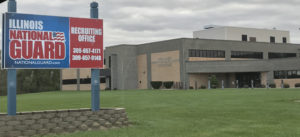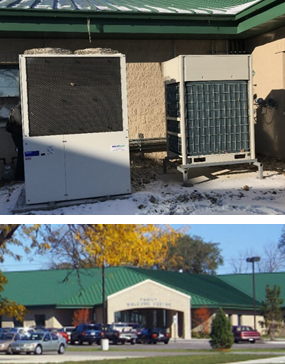As the largest energy consumer in the federal government, the U.S. Department of Defense (DOD) sets the pace for increasing energy efficiency and helping emerging technology reach the market with multi-phase RD&D projects. GTI Energy is working closely with DOD through the U.S. Army Corps of Engineers Construction Engineering Research Laboratory (CERL), the Environmental Security Technology Certification Program (ESTCP), and other initiatives to assess a broad slate of technologies for their ability to cost-effectively reduce energy use and improve energy resiliency in military bases.
 GTI Energy successfully completed a project with CERL to evaluate the energy savings, cost-effectiveness, reliability, and resilience improvements of emerging high-efficiency natural gas-fired technologies for heating, cooling, hot water, air compressors, and backup power generation at the U.S. Army Engineer Research and Development Center (ERDC) facilities in Vicksburg, Mississippi.
GTI Energy successfully completed a project with CERL to evaluate the energy savings, cost-effectiveness, reliability, and resilience improvements of emerging high-efficiency natural gas-fired technologies for heating, cooling, hot water, air compressors, and backup power generation at the U.S. Army Engineer Research and Development Center (ERDC) facilities in Vicksburg, Mississippi.
Innovative gas-fired kettles and advanced warewashers with drain water energy recovery systems are being demonstrated at Naval Station Great Lakes (NSGL) to transition facilities from a central steam system to gas-fired equipment to reduce energy consumption, water usage, and greenhouse gas emissions for dining facilities in their barracks. Results have been very positive, and the high-efficiency gas-fired warewashers are expected to reduce galley operating costs by over $41,000, save 1.45 million gallons water, and decrease energy use by almost 2,400 MMBtu per year. Phase 2 is testing tankless gas-fired water heaters that are projecting 40% savings and payback in about 7 years.
Control equipment testing for the Illinois Army National Guard delivered energy savings for advanced boiler pump controls, retrofit advanced RTU controls, and recirculating pump controls for central hot water, which shows more than 50% gas savings, reduced pump runtime by about 60%, and a 2-year payback timeframe. Demonstrations of other emerging fuel-fired space and water heating technologies and secondary equipment to reduce loads are underway to improve efficiency, lower lifecycle costs, reduce carbon emissions, and enhance resilience for DOD facilities.
In addition to demonstrating a new micro combined heat and power (mCHP) system at NSGL, GTI Energy is evaluating existing mCHP and microgrids installed at Maine Army National Guard facilities to quantify performance and economics.
GTI Energy is also partnering with CERL to execute a new Hydrogen Energy Research Operation (HERO) program aimed at demonstrating and deploying hydrogen technologies for clean and resilient energy in army installations. HERO’s mission is to integrate state-of-the-art systems that span hydrogen production, delivery, storage, and end use and demonstrate a viable framework that can be replicated globally to ensure continuity of essential infrastructure.
Demonstrating Natural Gas and Electric Heat Pump Systems in a Cold Climate
A side-by-side assessment of a gas engine heat pump (GHP) and electric cold climate heat pump for heating/cooling compared to an existing conventional HVAC system has been completed at Naval Station Great Lakes.
Variable refrigerant flow (VRF) heat pump systems provide space conditioning for multi-zone commercial buildings. The demonstration included a measured field performance evaluation as well as enhancement of Energy Plus models for both gas and electric variable refrigerant flow (VRF) heat pump systems which provide space conditioning for multi-zone commercial buildings. Both VRF systems demonstrated improved comfort along with energy savings, reduced peak electric demand, and lower lifecycle costs compared to the baseline system.
Both VRF systems reduced primary energy use by about 57% and lowered full-fuel-cycle GHG emissions by over 50% compared to the baseline.
Energy and Water Efficiency Improvements for Dishrooms in Military Dining Facilities
At the U.S. Army Garrison Presidio in Monterey, California, three dishroom technologies—waste water heat recovery, an advanced ventilation system, and a low water usage warewasher—were integrated to demonstrate and quantify energy and water savings.
The demonstration of this high-efficiency commercial food service dish machine produced noteworthy results including 51% gas savings, 41% electricity savings, and 81% water savings.
A Best Practices Guide and webinar were developed to assist energy managers, consultants, and commercial foodservice contractors at DOD locations in understanding the benefits of these dishroom technologies.
Learn More
Contact the energy experts today


